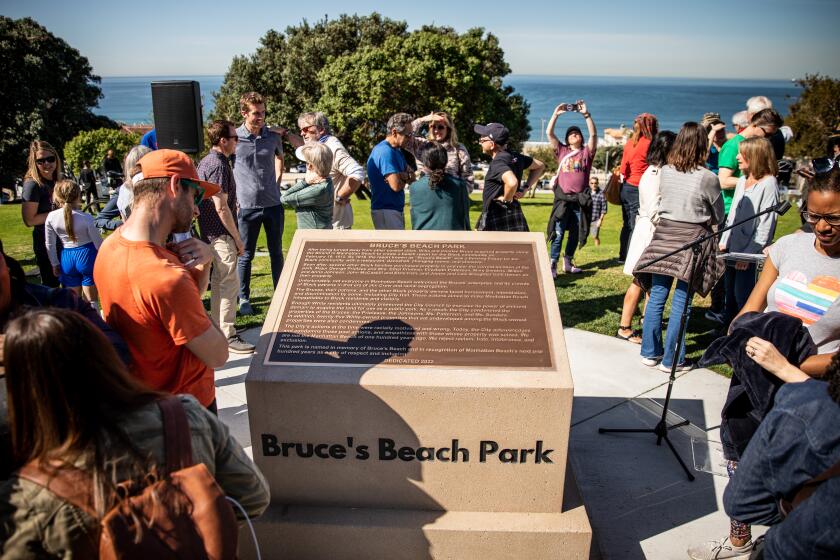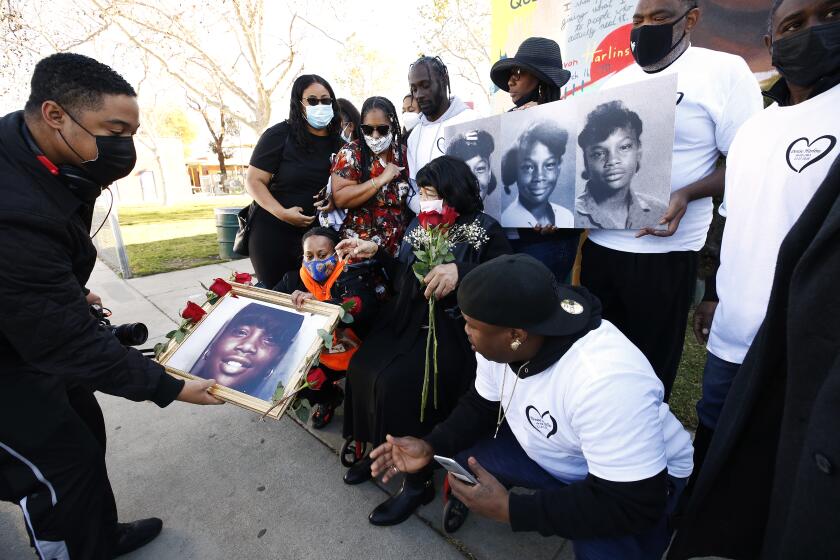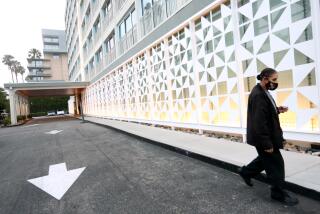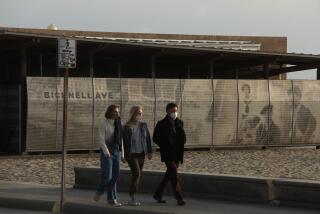Column: Manhattan Beach is trying to close the book on Bruce’s Beach. It should try harder
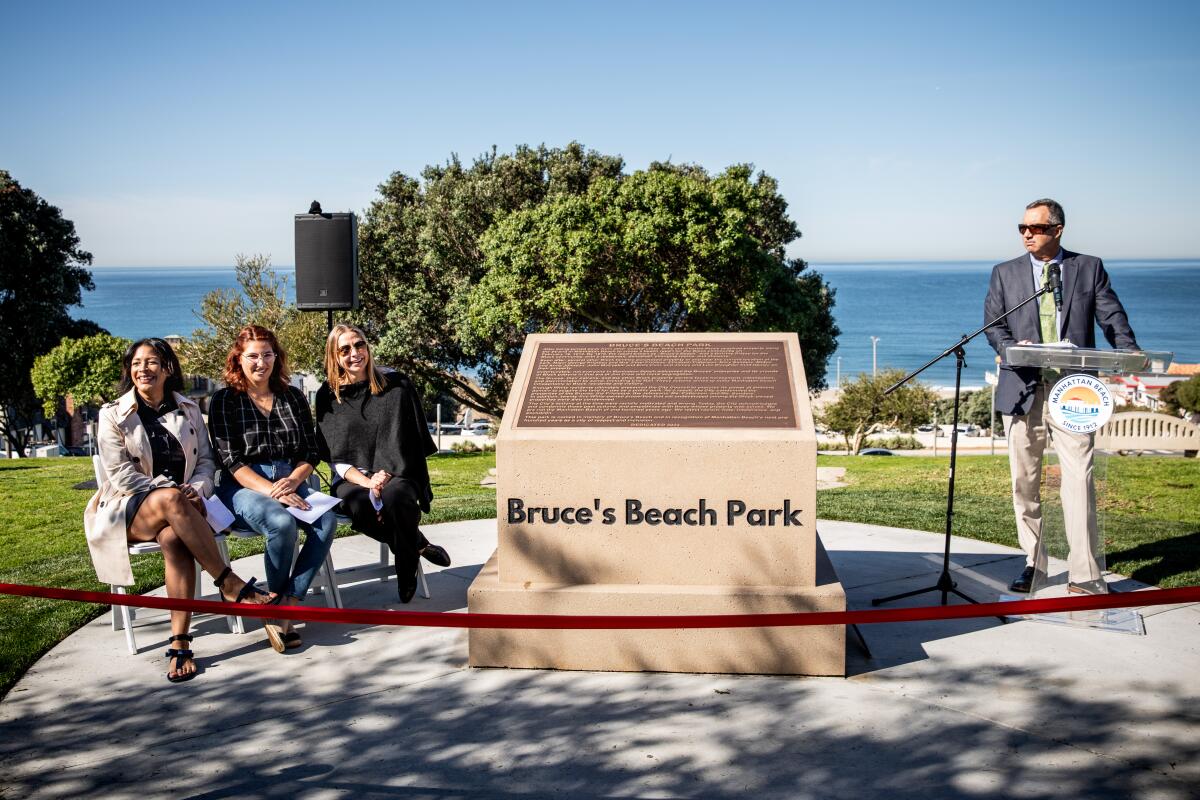
May we forever stand,
true to our God,
true to our native land.
Manhattan Beach Mayor Steve Napolitano waited behind a microphone while the final verse of “The Black National Anthem” floated over the grassy hillside of Bruce’s Beach Park, down toward the multimillion-dollar homes abutting the Strand, and finally over the deep blue of the Pacific Ocean.
“I’m feeling like a race car driver,” the white man confessed to the mostly white crowd gathered in a spot that had been a haven for Black beachgoers before the city of Manhattan Beach stole it using a racist act of eminent domain.
“Know what that feels like?” Napolitano continued. “Everyone’s just there waiting to see if you crash and burn.”
After almost three years of controversy and fraught debate, Manhattan Beach unveiled a new Bruce’s Beach monument and sought to mark a chapter of healing.
He did neither on Saturday morning. A long-planned ceremony to dedicate a new plaque — one that describes the many injustices done to Willa and Charles Bruce and several other Black families that, a century ago, owned the beachfront land and ran businesses on it — went surprisingly well.
The mayor even did what the rest of the Manhattan Beach City Council has stubbornly refused to do. He said he’s sorry.
“I’ve heard all the excuses,” he said. “ ‘The families were compensated. It was a long time ago. An apology is an admission of guilt and apology will mean lawsuits.’ Nonsense. All of them. I can apologize on my own, and so right now, I do.”
But — to extend Napolitano’s race car analogy a little further — getting to this place that feels like a finish line in the decades-long saga over Bruce’s Beach has been one hell of a bumpy ride. And yes, the city has crashed and burned more than a few times.
The story of what happened to the Bruces and the other Black families has always been known in Manhattan Beach but rarely talked about, like an open secret. Even as historians pointed out facts over the years, residents and elected officials ignored them. They wanted to forget the past and their city’s contribution to the American-as-apple-pie practice of terrorizing Black people and depriving us of generational wealth.
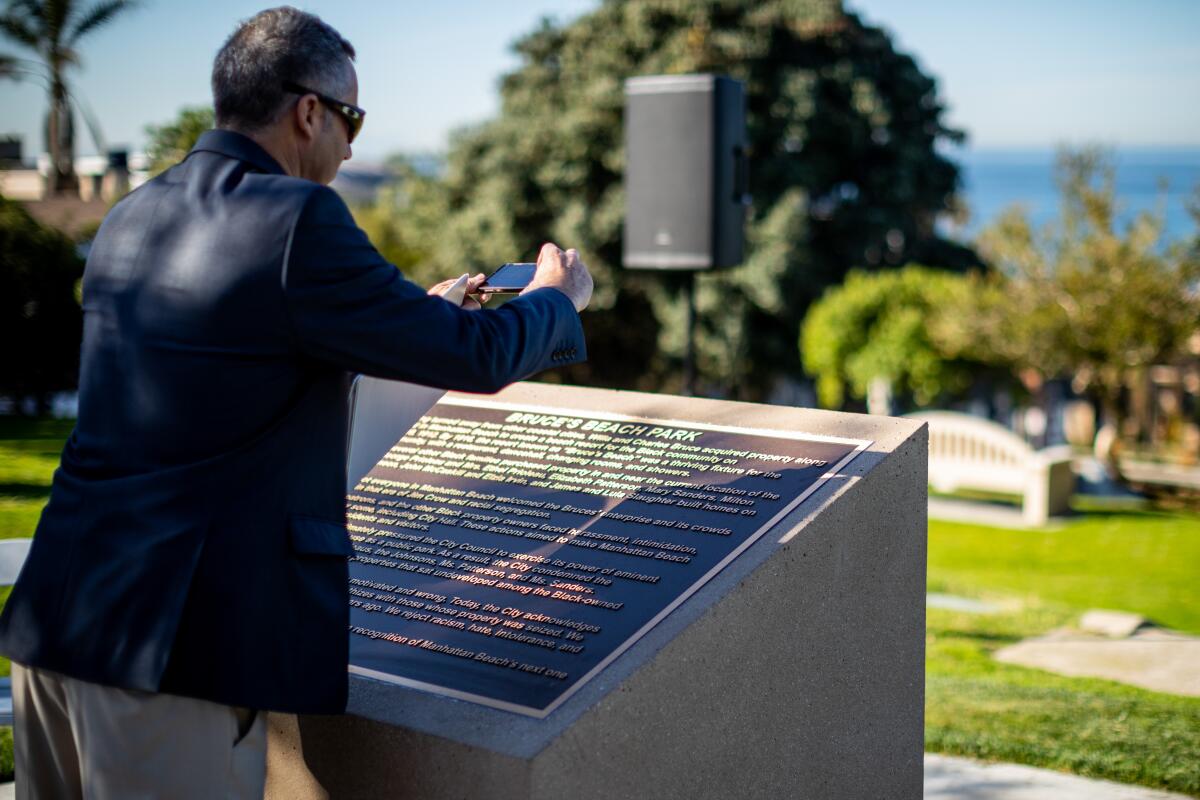
It was only because of a group of irrepressible Black activists and the urgency of the pandemic-era racial reckoning that forced Bruce’s Beach permanently into the public dialogue.
So, it’s telling that those Black activists were nowhere to be found on Saturday. The same with the Black elected officials who attended previous ceremonies at Bruce’s Beach Park, including one in which Gov. Gavin Newsom symbolically handed over ownership of the beachfront property to members of the Bruce family. Not even the city’s first — and only — Black mayor, Mitch Ward, attended.
And vice versa, many of the white elected officials who were there Saturday refused to come to those previous ceremonies.
“The story of Bruce’s Beach,” Napolitano said at one point, drawing nods from the many white members of the Manhattan Beach City Council, “parallels the story of racism in America in the early part of the last century.”
Not everyone is happy the family of Willa and Charles Bruce are selling their beachfront property for $20 million, just months after it was returned.
And indeed it does.
But what Napolitano seemed unwilling to reckon with is that the story of Manhattan Beach parallels the story of racism in America in the early part of this century. It’s the story of how white people, used to being in power and being able to decide what history the rest of us should care about, are being forced to confront a changing country.
Known for being in the “bubble” of the South Bay, this city has long been overwhelmingly white and wealthy, even as the rest of Los Angeles County has become increasingly diverse and impoverished.
Nationally, these sort of demographic shifts — accompanied by persistent calls to address systemic racism — have created the perfect conditions for the ugliness of white grievance politics. Locally, such shifts have manifested more as the sort of foot-dragging, whining and general reluctance to change that we’ve seen in Manhattan Beach.
Ward has lived this. Not long after he became mayor in 2006, he took up the cause of Bruce’s Beach.
Knowing the history that so many others had refused to acknowledge, he wanted to rename the park where Napolitano spoke on Saturday after the Bruce family. Why not, he thought, celebrate the first Black entrepreneurs and residents in Manhattan Beach? As a Black man, he saw them — and still sees them — as local heroes.
In one victory, L.A. has renamed a playground for the Black teenager who was shot at a South Central liquor store in 1991
Not everyone agreed.
“The dialogue was tough and difficult,” Ward told me. “There were people that were adamantly opposed — including people that were on City Council — to the renaming and I was stunned. There were friends in the audience that were saying things that I was shocked they would say.”
Ironically, it was then-Councilmember Joyce Karlin Fahey — who in a previous life was the judge who gave Korean-born merchant Soon Ja Du probation in the killing of 15-year-old Latasha Harlins, helping spark the 1992 L.A. riots — who gave Ward the votes he needed for Bruce’s Beach Park.
Manhattan Beach changed then, if reluctantly.
“It made me feel even better about my town,” Ward told me. “Because there was a Black man leading the city and we prevailed. We got the name of a park in our town renamed for a Black family.”
The plaque that was installed there when Ward was mayor was replaced ahead of Saturday’s ceremony. The language on it is new — different, more whitewashed and politically palatable, some historians have said. That’s why he didn’t attend.
“I want to honor Willa and Charles, but not that plaque,” Ward told me.
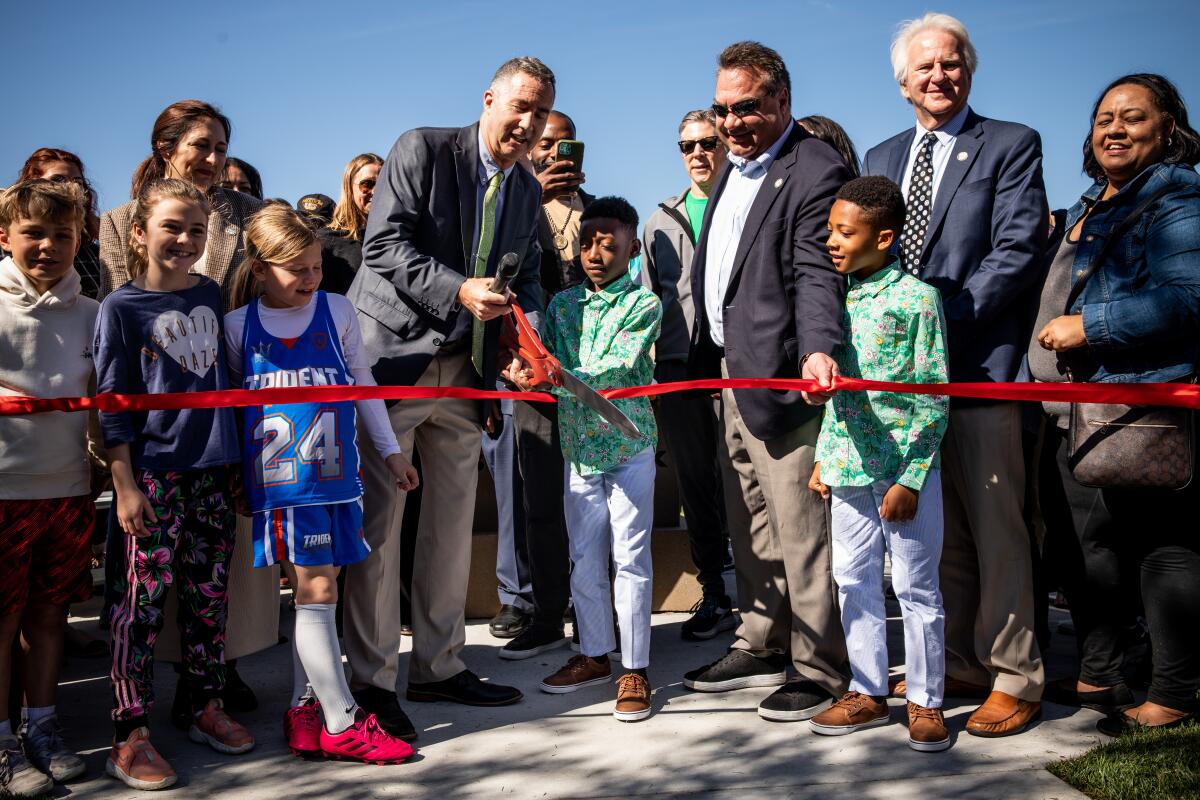
Napolitano dismissed the criticism, just like he dismissed the criticism about Manhattan Beach being a racist city and council members being “white saviors.” To the contrary, he insisted. The city had “raw discussions regarding past and present racist incidents” and praised elected officials for subjecting themselves to “the slings and arrows of public scrutiny.”
“It goes to show that we’re never going to please some people,” he said, “some of whom stood on this very spot 16 years ago in celebration of nothing more than a renaming of this park.”
Funny how neither Napolitano nor anyone else who spoke at Saturday’s ceremony mentioned the Black activists who forced the city to have those “raw discussions” in the first place. Instead, they repeatedly credited the late Manhattan Beach historian Bob Brigham, who is white.
May we forever stand, true to our God, true to our native land.
“We’re here today to unveil a new plan to reconcile our history, confront some uncomfortable truths, and recognize how far we’ve come while acknowledging how far we still need to go,” Napolitano said, his words floating over the grassy hillside of Bruce’s Beach Park, down toward the multimillion-dollar homes abutting the Strand. “We are not here to check a box [or] pat ourselves on the back.”
More to Read
Sign up for Essential California
The most important California stories and recommendations in your inbox every morning.
You may occasionally receive promotional content from the Los Angeles Times.
